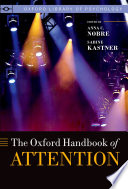
The Oxford Handbook of Attention
By - Nobre, Kia(ED) , Kastner, Sabine(ED_)
Floor
-
Ground Floor
Published
-
Oxford University Press, Oxford, 2014
ISBN 10 - 0199675112
ISBN 13 - 9780199675111
Book Status
-
1 Qnty Available with us.
Subject
-
Cognitive neuroscience
Shelf No
-
1
Call Number
-
150 OXF Ref.
Physical Description
-
xvi, 1242 pages : illustrations (some color) ; 26 cm.
Notes
-
Includes Index